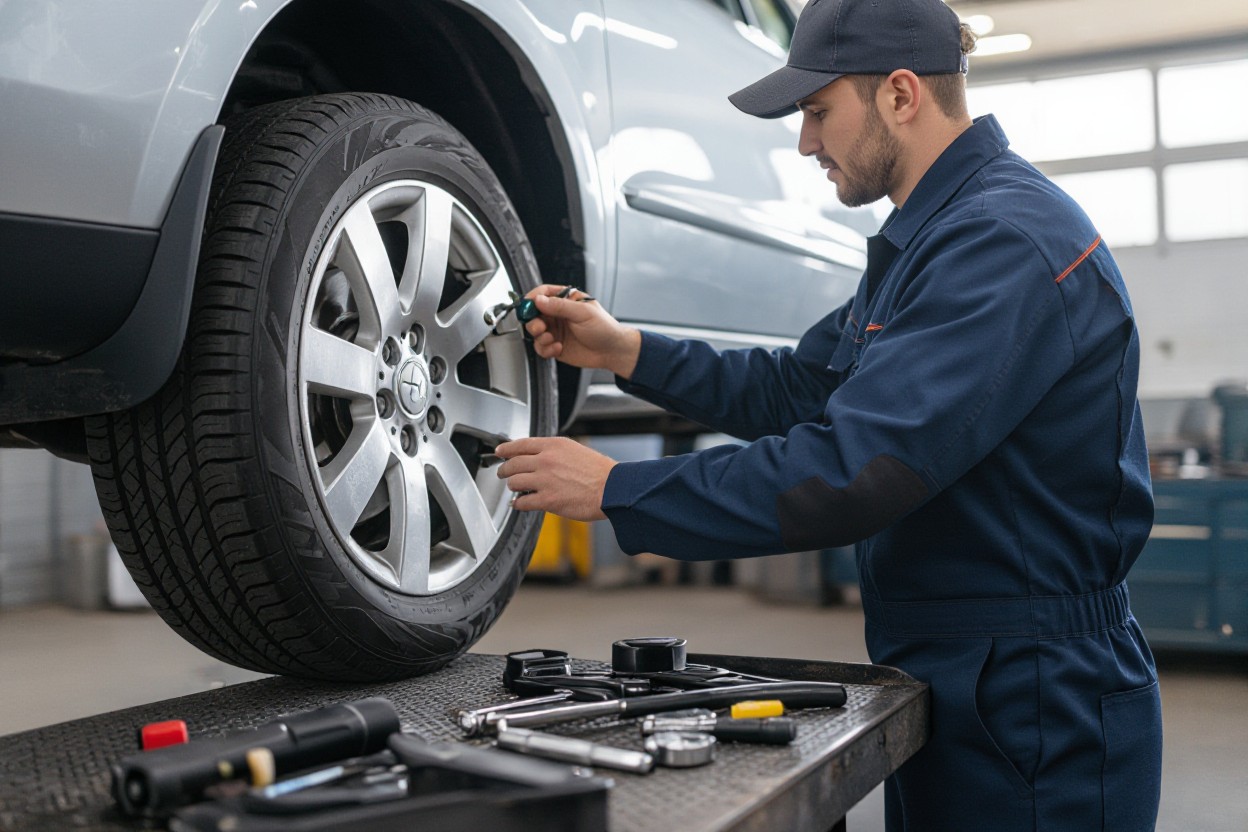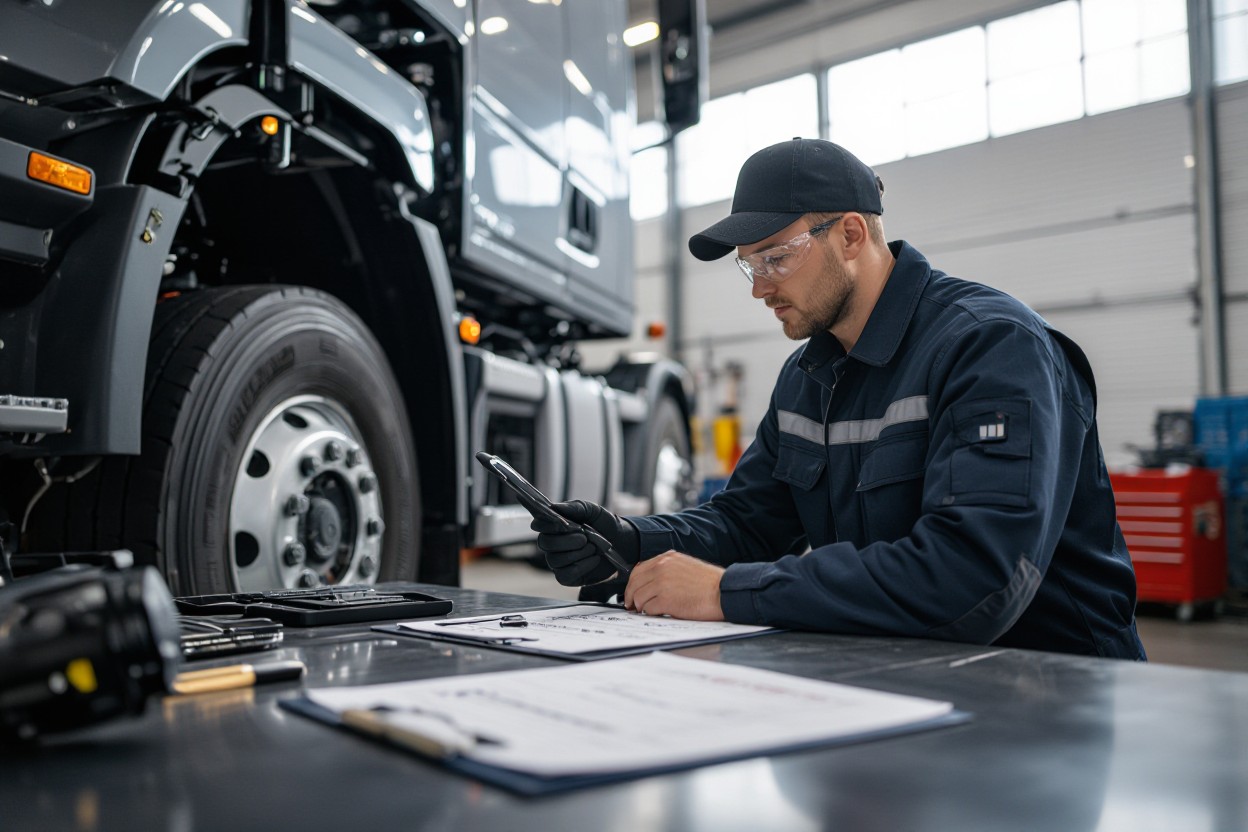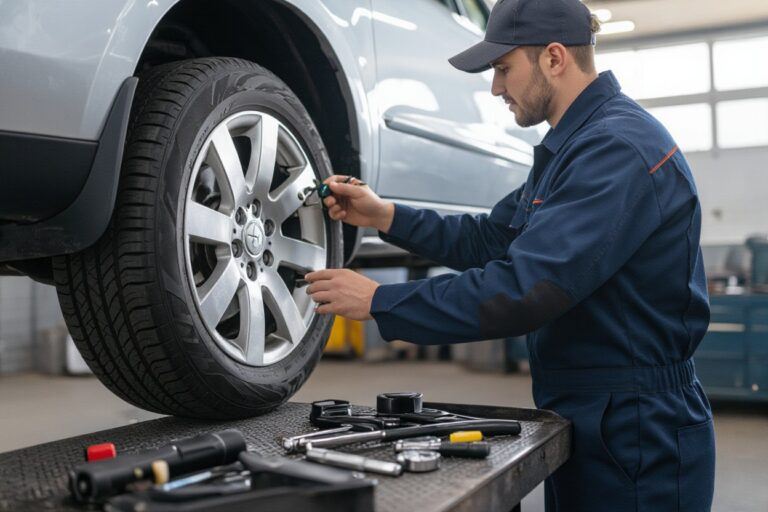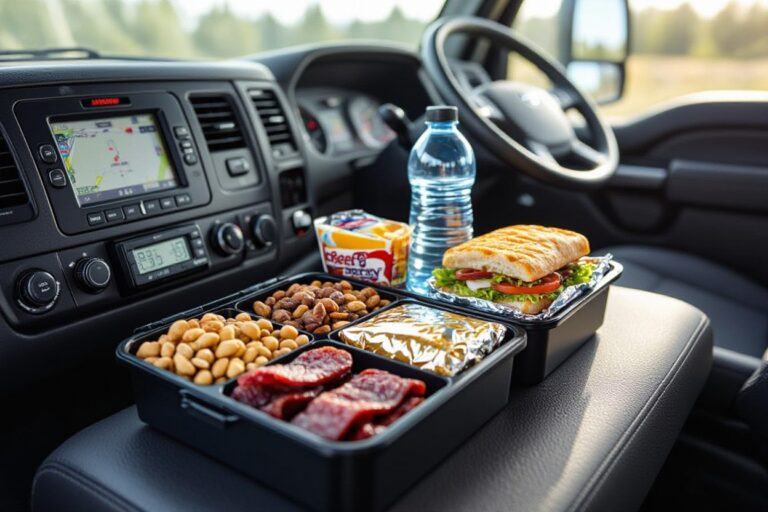
It’s your responsibility to perform a thorough pre-trip inspection because skipping checks can cause deadly failures and costly roadside breakdowns; when you inspect brakes, tires, lights, and fluid levels you reduce the risk of accidents, protect your passengers and cargo, and extend vehicle life, so making inspections a consistent habit keeps you safer and saves you time and money.
Key Takeaways:
- Detect mechanical problems (brakes, tires, lights) before departure to reduce accident risk.
- Prevent costly breakdowns and unplanned downtime by identifying wear and faults early.
- Ensure regulatory compliance and reduce liability, fines, or denied insurance claims from neglected inspections.
The Preventable Dangers of Skipping Inspections
Skipping pre-trip checks lets small defects escalate into immediate hazards: a hairline axle crack, an underinflated tire, or a dragging brake can turn routine miles into emergency stops, rollovers, or jackknifes. FMCSA data consistently flags vehicle-condition violations as among the top reasons trucks are taken out of service, and you face higher crash risk, heavy fines, and downtime when you skip the walkaround.
Common Technical Failures
Brake system problems, tire failures, lighting and wiring faults, loose lug nuts, and improper coupling are the failures you see most. DOT guidance requires at least 4/32″ tread on steering tires; below that your risk of blowout rises sharply. You should check pad wear, air lines, wheel torque, and ABS lights every trip to avoid these predictable breakdowns.
Real-World Accidents Linked to Oversights
NTSB and state investigations repeatedly trace serious crashes to missed pre-trip items: undetected brake fade causing runaways, wheel separations from loose nuts, and trailer detachments during highway maneuvers. Those mechanical oversights have produced multi-vehicle pileups and fatalities, showing that a single overlooked fastener or worn tire can have catastrophic consequences for you and others on the road.
Post-crash forensic reports commonly reveal concrete numbers you can act on: tire tread under 4/32″, brake lining reduced to fractions of an inch, or wheel-stud elongation indicating inadequate torque. In several cases investigators documented wheel separation after studs lost >30% of their thread engagement, and failures at highway speeds (50–65 mph) turned minor defects into fatal events—proof that your pre-trip checks directly prevent measurable, avoidable disasters.

Financial Repercussions of Neglecting Pre-Trip Checks
Skipping pre-trip inspections means you’ll face immediate repair bills, lost revenue from downtime, and potential fines after DOT inspections; a single incident like a preventable brake failure can sideline your vehicle for days and cost $2,000–$15,000 in repairs and towing alone. Contractors and shippers notice unreliability, so missed checks can translate into lost routes and long-term revenue decline that exceeds the upfront minutes saved by skipping inspections.
Repair Costs Versus Proactive Maintenance
Routine tasks such as fluid checks and brake-pad swaps typically run $100–$500, while deferred issues escalate: wheel-end failures, turbo repairs, or engine rebuilds often exceed $5,000–$20,000. You save significantly by catching worn tires or low oil early—preemptive spending of a few hundred dollars per vehicle prevents cascading damage that multiplies repair bills and increases fleet-wide downtime.
The Impact on Insurance and Liability
After an at-fault incident tied to poor maintenance, your insurer may raise premiums 20–40% or more, impose higher deductibles, or deny claims if inspection records are missing. Legal exposure also skyrockets: settlements for serious accidents involving commercial vehicles commonly reach six- to seven-figure amounts, transferring massive financial risk directly to you and your company.
Insurers and courts scrutinize driver vehicle inspection reports (DVIRs) and maintenance logs; absence of documented pre-trip checks can be used to prove negligence in litigation and during claim adjudication. Regulators use CSA scores to flag unsafe carriers, increasing audit frequency and policy costs. You should maintain clear, dated inspection records—failure to do so has led fleets to face claim denials, contract cancellations, and carrier liability judgments exceeding $1,000,000 in high-severity cases.
The Role of Pre-Trip Inspections in Safety Compliance
You follow mandated checks so regulators and courts can see you acted reasonably; federal rules like 49 CFR Part 396 and 392 require drivers to inspect vehicles and document defects. Roadside data repeatedly shows brakes, tires, and lights as top out-of-service reasons, and catching those issues pre-departure prevents breakdowns, reduces crash risk, and limits liability in investigations or claims.
Legal Requirements for Commercial Vehicles
You must complete and retain a Driver Vehicle Inspection Report (DVIR) per 49 CFR 396.11, log visible defects, and ensure repairs before the next trip. Enforcement officers regularly cite failures to inspect or correct faults; fleet audits and roadside inspections often result in violations when brake chambers, tire tread, or lighting aren’t addressed.
Best Practices for Personal Vehicles
You should perform a quick walkaround before every long drive: check tire pressure against the door-jam psi, use a quarter test for tread, verify all lights work, top off fluids, and confirm jack/spare condition. Keep an emergency kit with a flashlight, water, and jumper cables; bald tires and brake fluid leaks are immediate safety hazards.
You can run a reliable 10-minute pre-trip routine: step 1 — inspect all four tires for cuts, bulges, and proper inflation; step 2 — test headlights, brake, turn and reverse lights; step 3 — peek under for leaks and check oil, coolant, and brake fluid levels; step 4 — ensure windshield wipers and washer fluid are functional and secure loose cargo. Doing this weekly and before any trip cuts roadside failures and repair costs significantly.

How Pre-Trip Inspections Save Time and Hassle
A 10-minute pre-trip inspection lets you catch small issues before they become full stops: loose lug nuts, low tire pressure, or fluid leaks often cause roadside repairs that cost hours. Many fleets report up to a 40% reduction in roadside breakdowns after enforcing daily checks, and correcting tire pressure alone can improve fuel economy by up to 3%, saving both time and money on long runs.
Efficient Travel Planning
You streamline routing by confirming cargo securement, weight distribution, and paperwork before departure, avoiding unexpected weigh-station holds or reloading delays. Spending 5–10 minutes to verify load straps and trailer lights prevents off-balance shifts that trigger inspections or accidents, and helps you meet scheduled delivery windows with fewer last-minute detours.
Long-Term Benefits of Routine Checks
Routine inspections reduce unscheduled maintenance and extend component life, with many operators reporting 15–30% lower maintenance costs over a year. Logging wear on brakes, tires, and batteries lets you replace parts at planned intervals, cutting emergency towing and shop hours while improving fleet reliability and driver uptime.
Tracking inspection data for 6–12 months reveals failure patterns—corroded connectors after winter, accelerated tire wear on a specific axle—so you can shift to predictive maintenance. Integrating those logs with service schedules preserves warranties, raises resale value, and prevents catastrophic failures that lead to long-term downtime and higher repair bills.
Rethinking Your Pre-Trip Routine: A Checklist for Success
You streamline your pre-trip routine by building a concise, repeatable checklist that takes 10–15 minutes and prevents costly downtime; focus first on brakes, tires, and lights, then verify fluids and documentation. Use a consistent order—left-to-right, top-to-bottom—to avoid missed steps and reduce stress on long hauls. Failing to inspect one item can cause a mechanical failure on the road.
Essential Items to Inspect
Start each cycle by checking tire pressure (psi within manufacturer range), tread depth, and sidewall cuts; then test brakes for pad wear and response, confirm lights and signals function, top off engine oil and coolant, and ensure registration and permits are onboard. Worn tires or hydraulic leaks frequently lead to roadside breakdowns and fines.
Time Management Tips for Effective Inspections
Batch similar checks—wheels, undercarriage, and brake systems—so you move efficiently; use a timed checklist app or a laminated quick-sheet to keep inspections within 10–15 minutes. Inspect during cool-down to avoid burns, prioritize high-risk components first, and document issues with photos for faster repairs. Consistent timing reduces oversight and legal exposure.
- Brakes
- Tires
- Lights
- Fluids
- Documentation
Perceiving inspection trends reveals recurring faults, enabling targeted repairs before they cause failures.
Use time-blocking: allocate 5 minutes for a walkaround, 5 minutes for under-hood checks, and 5 minutes for paperwork; practicing that order often cuts an initial 25-minute routine to a reliable 10–15 minutes while still catching most defects. Keep tools and forms in a dedicated kit, pre-fill recurring entries, and train any assistants to follow your sequence. Routine saves hours over a year.
- Walkaround
- Under-hood
- Documentation
- Timed checklist
Perceiving small time savings compounds into fewer breakdowns and lower operating costs.
To wrap up
Presently you face the choice to inspect or skip; by performing pre-trip inspections you protect your safety, avoid costly breakdowns, ensure compliance with regulations, and maintain operational efficiency. Your attention to tires, lights, brakes, and fluid levels prevents incidents, reduces downtime, and preserves your reputation and wallet. Skipping inspections gambles with lives and livelihoods—make inspections non-negotiable.
FAQ
Q: Why should drivers conduct a pre-trip inspection before every trip?
A: A systematic pre-trip inspection identifies worn tires, loose or damaged brakes, fluid leaks, faulty lights, improper load securement and other defects that can lead to in-route breakdowns or crashes. Catching problems before departure reduces the chance of sudden failures that endanger the driver and other road users, and it allows repairs to be completed on the operator’s schedule instead of during an emergency.
Q: How do pre-trip inspections affect legal compliance and liability?
A: Many jurisdictions and regulatory bodies require documented inspections; completing them helps demonstrate compliance with safety rules and commercial vehicle regulations. Inspection records can limit legal exposure after an incident by showing due diligence, reduce the likelihood of regulatory fines during roadside checks, and improve outcomes with insurers by proving proactive maintenance practices.
Q: What long-term operational and financial benefits come from regular pre-trip inspections?
A: Regular inspections catch minor issues before they escalate into costly repairs, extending component life and improving fuel efficiency. Fewer roadside failures mean less downtime, fewer missed deliveries, and lower tow and rental expenses. Consistent safety performance also protects company reputation, helps maintain favorable insurance and contract terms, and lowers total cost of ownership for the vehicle fleet.



